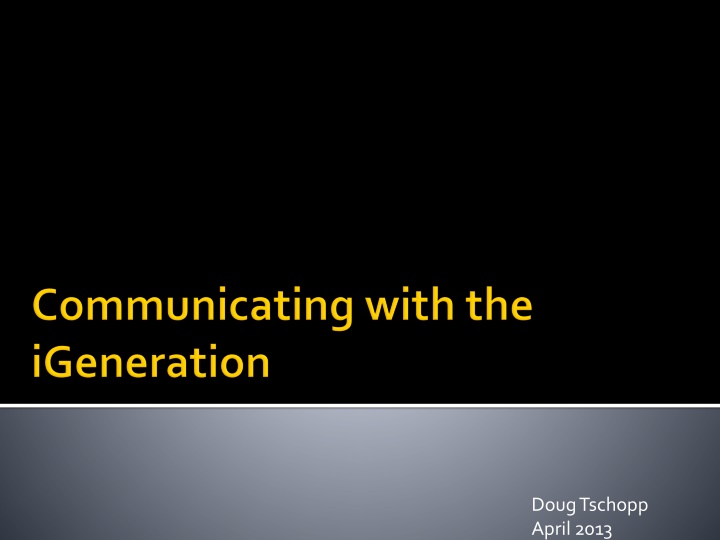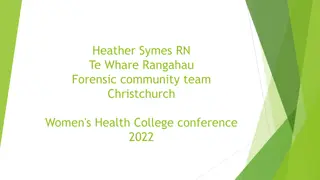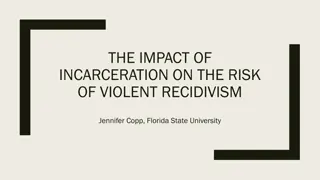Mass Incarceration and Public Health Perspectives
Understanding the impact of mass incarceration on public health is crucial for addressing widening inequalities. This issue delves into the eroding health of communities, the struggles faced by formerly incarcerated individuals, and the importance of promoting health equity to break the vicious cycle. With insights from studies such as those by Wildeman and Wang (2017) and Freudenberg, it's evident that the collateral costs of incarceration go beyond economic mobility, affecting mental health, poverty, domestic violence, and substance abuse. The COVID-19 pandemic has also brought attention to the challenges faced by detainees. Humanizing their claims and supporting initiatives to address these issues are vital steps towards a healthier society.
Download Presentation

Please find below an Image/Link to download the presentation.
The content on the website is provided AS IS for your information and personal use only. It may not be sold, licensed, or shared on other websites without obtaining consent from the author.If you encounter any issues during the download, it is possible that the publisher has removed the file from their server.
You are allowed to download the files provided on this website for personal or commercial use, subject to the condition that they are used lawfully. All files are the property of their respective owners.
The content on the website is provided AS IS for your information and personal use only. It may not be sold, licensed, or shared on other websites without obtaining consent from the author.
E N D
Presentation Transcript
Doug Tschopp April 2013
The Past What is a Generation? What is new? iGeneration
Baby Boomer Generation 1946-1964 Generation X 1965-1982 Millennials 1982-2003 iGeneration 2003+
Optimistic Idealist Communicative Value good education
Influenced by technology Desire instant gratification Value family Flexible
Diverse Redefined tradition and religion Influenced by the recession Desire immediate gratification
Location in history Beliefs and behaviors Perceived membership
Family Life Gender Roles Important Institutions Politics Religion Culture Lifestyle Views on the Future (Howe and Strauss 2000)
They have always lived in cyberspace, addicted to a new generation of electronic narcotics. They can t picture people actually carrying luggage through airports rather than rolling it. Michael Jackson s family, not the Kennedys, constitutes American Royalty.
Probably the most tribal generation in history, they despise being separated from contact with their similar-aged friends. They watch television everywhere but on a television Before they purchase an assigned textbook, they will investigate whether it is available for rent or purchase as an e-book.
Who They Are How They Communicate What the Future May Hold
Who are they? What does the I represent ?
Internet-savvy Comfortable with technology Great multi-taskersor task switchers Favor individualization and all things customized
Of interest Nielsen Company (Educational Leadership 2011) The average teenager sends 3,399 texts a month 6 messages every hour that he or she is not sleeping
Of interest Rewired: Understanding iGeneration and How They Learn 35% of children ages 6mo to 3 years have TV in their room 10% of children ages 4-8 have a computer in their bedroom 51% of children ages 9-12 have cell phone
iGens hold more shopping power Spending $239 billon annually Influential in family purchases Rely on parents for money
WWW Whatever Whenever Where ever
Rewired: Understanding iGenerationand How They Learn Early introduction to technology Adeptness at multitasking or switching tasks Desire for immediacy Ability to use technology to create a vast array of content
Fears Hopes Not getting good grades Become a millionaire A+ A+ A+ A+ A+ A+ Not having enough money Have positive impact on society Appearance
Among teens with a smartphone, however, 50% access the Internet primarily via the mobile device. 37% of teens in the U.S. have a smartphone. Girls are more likely than boys to rely on their smartphone as their primary Internet access device. 25% of those aged 12-17 access the Internet "primarily" via a cell phone or smartphone.
Pew Internet Teens and Privacy Management Survey July 26-September 30, 2012
Pew Internet and American Life Project 2011 Use social networking sites such as Facebook, Myspace, and Twitter Use video chat resources such as Skype or iChat Record and upload videos
Whats Next?
Use technology to convey content Utilize video outside of class Free up time to analyze, synthesize and assimilate material























